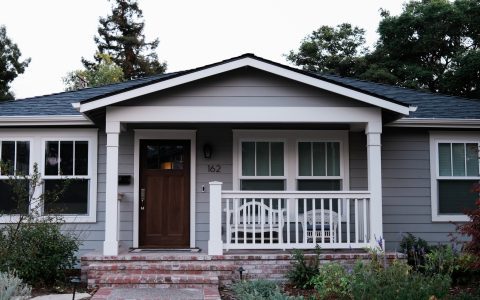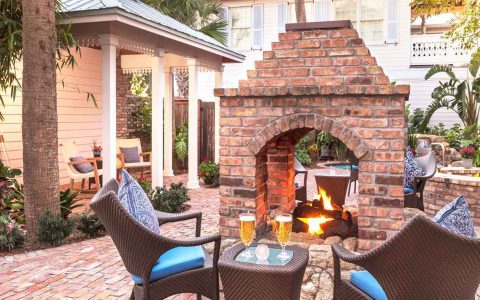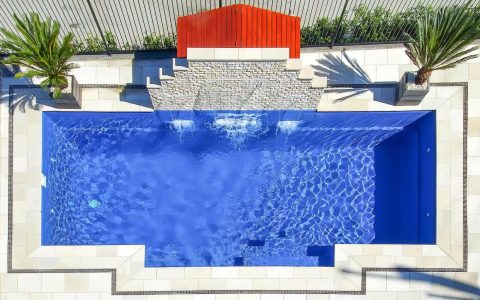Choosing the right decor facade design significantly enhances curb appeal and complements your home's architecture. Focus on these core principles:
1. Architectural Consistency
Respect Your Home's Style: Modernize within the existing framework. A Tudor revival benefits from half-timbering references; a Craftsman bungalow suits tapered columns and exposed rafter tails. Forcing incompatible styles creates visual dissonance.
2. Material Selection & Integration
Durability and maintenance are paramount:
:strip_icc()/white-house-a-frame-section-c0a4a3b3-e722202f114e4aeea4370af6dbb4312b.jpg)
- Brick/Stone: Timeless, low upkeep, adds texture/weight. Ideal for traditional styles or accents.
- Fiber Cement Siding: Mimics wood/stone, excellent durability, rot/insect resistant. Versatile choice.
- Stucco: Clean, modern look (smooth) or rustic (textured). Suits Mediterranean, Southwestern, Modernist.
- Wood (Cedar/Redwood): Warm, natural aesthetic. Requires significant staining/sealing maintenance. Consider battens (board and batten) for cottage or farmhouse styles.
Prioritize Harmony: Mix materials thoughtfully (e.g., stone base with siding above), avoiding clashes in texture or finish. Ensure additions match the weight and scale of existing materials.
3. Strategic Color Application
Colors define perception:
- Field Color (Dominant): Largest surface area. Select shades harmonious with roofing and surroundings. Cool tones recede; warm tones advance.
- Trim Color: Highlights architectural features (windows, doors, cornices). Strong contrast creates drama; subtle tonal shifts offer sophistication.
- Accent Color: Reserved for doors, shutters, or key details. Use sparingly for impactful focus. Ensure it complements the field and trim colors.
Rule: Limit palette to 3 main colors. Test large samples on-site at different times of day before finalizing.
4. Thoughtful Decorative Element Integration
Details enhance without overwhelming:
- Trim & Molding: Add dimension and refinement. Window casings, corner boards, frieze boards under the eaves.
- Shutters (Functional or Decorative): Must be appropriately scaled to window opening (width ~ 1/2 the window). Avoid fake, non-proportional shutters.
- Porches & Porticos: Define entryways. Ensure style complements the main structure; oversized elements dwarf the facade.
- Lighting & Hardware: Fixtures, house numbers, door handles contribute to style. Choose cohesive finishes and appropriate sizing.
Avoid clutter; every element should have purpose. Assess existing rooflines and structural features to integrate new decorations logically.

Execution & Considerations
- Professional Consultation: For structural changes or complex material installations, consult architects or licensed contractors.
- Neighborhood Context: Aim to elevate, not alienate. Understand local guidelines.
- Long-Term Value: Prioritize durable, high-quality materials suitable for your climate. Balance initial investment against longevity and maintenance costs.
- Focal Point Focus: Direct attention to the primary entrance with color, lighting, or architectural detailing.
Successful facade makeovers emerge from disciplined style adherence, cohesive material and color selection, and purposeful, well-proportioned decorative enhancement.






